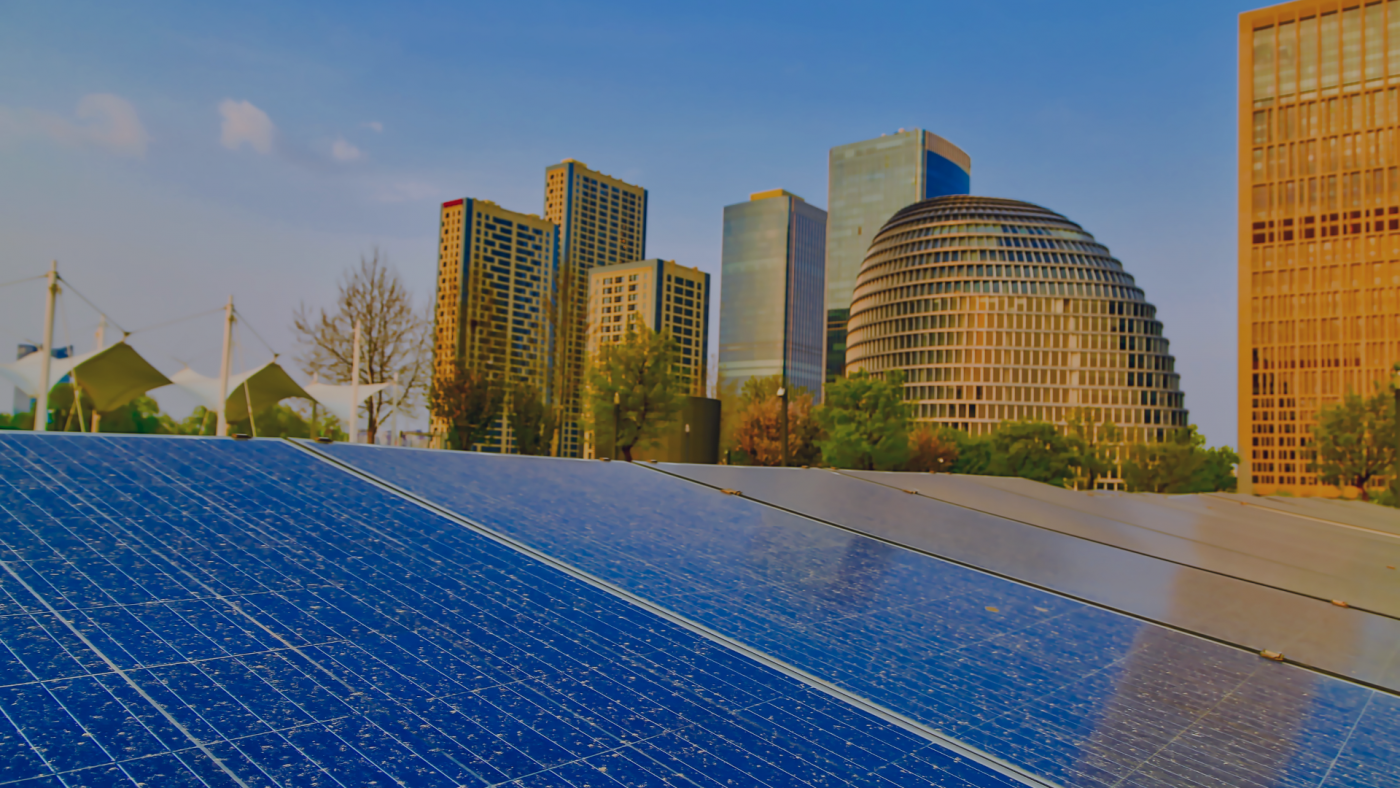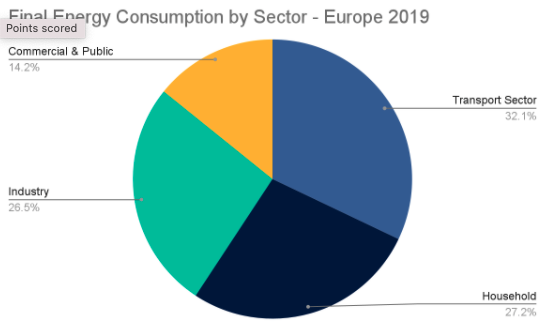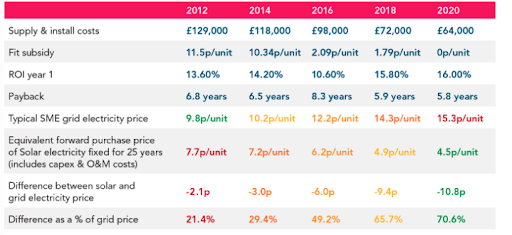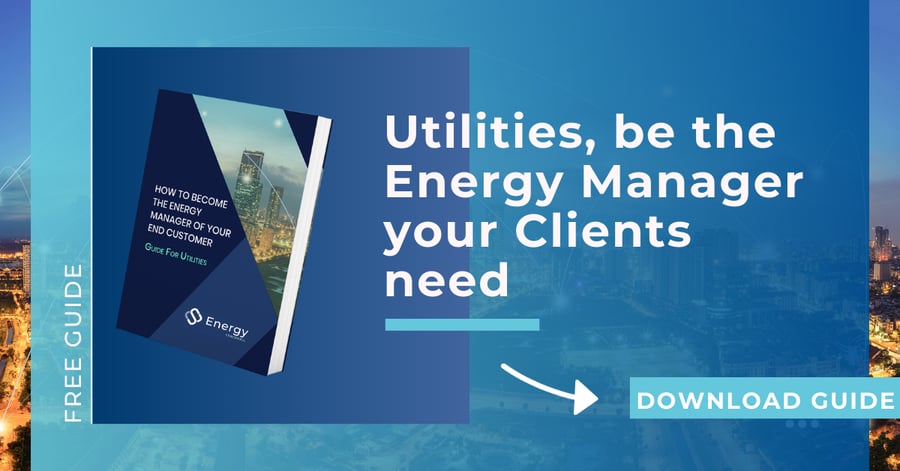Self-Consumption for Companies is an emerging trend. Companies are increasingly interested in generating and consuming clean energy and utilities are aware of this. In this article, we will review the current state of self-consumption in the UK. We will also find out how the most innovative utilities reinvent their customer-value proposition, capitalizing on this new business growth opportunity.
As we have already mentioned in previous articles, the European Green Deal aims to combat climate change and determines the actions that need to be taken in order to carry out the energy transition towards a sustainable energy model.
To take the right steps towards a cleaner energy model, Europe is tackling two main issues: the way we produce energy and the way we consume it.
According to Eurostat data, the commercial and industrial sectors (C&I) are the top energy consumers in Europe, accounting for more than 40% of final consumption.
Source: Eurostat
Improving the energy efficiency of buildings and facilities is therefore one of the major challenges Europe is facing.
One of the measures to overcome them and achieve the goals of sustainability and climate neutrality is the trend towards renewable energy generation for self-consumption.
And why self-consumption?
This concept of energy consumption encourages investment in clean energy generation and allows consumers to save energy and reduce their electricity costs. That is also for that reason that self-consumption is a key lever to accelerate the Energy Transition.
This alternative solution to conventional and expensive energy consumption is very popular in Southern European countries such as Spain. This country benefits from its sunny climate (300 days of sunshine a year) which makes its solar energy production profitable and uninterrupted. But what about Northern countries such as the UK?
Renewable Energy Self-Consumption Trend in the UK in 2021
The UK is not known for its Caribbean climate and shining sun. So, when it comes to dealing with solar power generation, you might wonder if the UK is really the most strategic place to produce solar energy.
In spite of that, the share of solar power in the UK electricity generation mix has increased rapidly over the years thanks to the Feed in Tariff Scheme (FIT)’s entry in force in March 2019.
The Feed in Tariff scheme aimed to grant subsidies for all grid-connected generated electricity. In other words, self-consumption for small systems (<30 kW) has been encouraged through a generation tariff and an export tariff applicable to the electricity fed into the grid.
However, the Department of Business and Industrial Strategy (BEIS) announced its intention to put an end to the feed-in tariff system from April,1st, 2019. Since then, self-consumption of solar electricity has become the main argument for installing solar PV.
According to the BEIS’s study on Energy Trends in 2020, electricity generated from renewable sources increased by 11.4% more than in 2019. A total new capacity of 660 megawatts (MW) was installed in the 12-month period to 31 March 2021, and the UK could be on track to deliver a gigawatt of new solar capacity this year.
Now in 2021, what is the trend for solar energy self-consumption? How much has the renewable and photovoltaic sector increased in the UK after COVID-19 pandemic?
The cumulative installed capacity of solar photovoltaics (PV) in the United Kingdom during the last decade has increased massively, rising from 95 megawatts in 2010 to 13,563 megawatts by the end of 2020. There are close to a million solar PV systems on houses around the country, and nearly 100,000 solar thermal in the UK.
Since March 2019, despite the impact of the end of the Feed-in Tariff (FiT) Scheme and the Spring 2020 lockdown, available data confirm that the trend keeps growing. The new figures released by Solar Energy UK and Solar Media Ltd. show that 175 MW of photovoltaic (PV) solar capacity was installed across the UK from January to March 2021. As global solar costs continue to drop, electricity and heat production from photovoltaics is expected to peak in the early 2030s.
The Energy Policy Scheme introduced by the British government over the past decade was intended to encourage companies and individual households to achieve energy efficiency. In The Ten Point Plan for a Green Industrial Revolution, the Government has committed itself to making buildings more energy efficient and moving away from fossil fuel boilers (point 7), targeting 71 MtCO2e savings between 2023 and 2032.
Moreover, nearly £140 million of funding has been awarded to PV projects by the government’s Public Sector Decarbonisation Scheme and 160 MW of PV is expected to be installed on public sector buildings alone in 2021. Last year in August, both thermal and PV were finally included in the Green Homes Grants scheme for residents.
And what about the PV solar market? The figures highlight a strong deployment and solid growth across the 3 main market segments during the first quarter of 2021.
- Domestic rooftops: The segment has known a 14% year-on-year growth. The changes made to Building Regulations could encourage significant PV solar deployment.
- Commercial and Industrial rooftops: Around 2 gigawatts of commercial and industrial rooftop solar system capacity are already installed in the UK. Solar Energy UK estimates that there are around 250,000 hectares of south-facing rooftop space in the UK. The market potential is therefore particularly significant. However, this segment market is absent of any government incentive schemes.
- Large-Scale Solar Farms/ Ground-Mounted Solar Park: In May 2020, along with other forms of solar power, solar parks helped the UK meet more than 11% of its entire electricity demand. Now, they form 70% of the new capacity.
Utilities: Companies’ Strategic Partners for Solar Photovoltaics Deployment
As we told you before, commercial and industrial rooftops have significant potential and should gradually grow in importance in the years to come.
3 characteristics should be considered that differentiate Commercial and Industrial energy self-consumption from domestic ones:
- Larger size of installations.
- Higher energy consumption.
- Absence of energy consumption time slots, as it tends to have a 24-hour consumption.
The manufacturing costs have fallen, making solar a viable and highly effective way to cut operational costs. But companies that opt for self-consumption of energy may face some challenges:
- Find the right funding and finance options.
- Choose a suitable technology and material (roof mounted solar schemes or ground mounted solar) according to their electricity needs.
- System design, installation, ongoing maintenance and monitor the performance of solar panels.
- Safely store and utilise the generated power.
- Maximise the benefit of their solar installation (reselling the extra solar energy to the grid, limiting the consumption from the national grid.
- Planning permission: In the UK construction permits from local municipalities for commercial rooftops up to 1 MW in size (planning permission) are delivered through a fast-track process. However, important limits and conditions must be respected (permission from the landlord, freeholder or management company, building regulations, installation requirements, etc). Planning permission will be required if the solar PV system is intended for installation on a listed building or a site designated as a scheduled ancient monument or world heritage site.
- Accreditations & certifications: HAS, Gas Safe Register, IET, MCS, NICEIC, RECC, BIS, etc.
- Testing and inspection costs.
- Registration with regulators and energy suppliers.
Despite these challenges, which are entirely solvable, self-consumption is very profitable for companies because of the benefits it brings:
1. Savings on their energy bills. Energy costs account for a high % of their total costs, so this energy model can provide high savings on electricity bills.
2. Financial stability: Choosing sustainable solar energy allows the companies to reduce their energy price rise exposure since they have kept hiking up over the past few years and better financial forecasting.
3. Financial gain for unused solar energy: This modality allows the energy produced that is not consumed (i.e. the surplus) to be fed into the electricity grid, with the company receiving compensation from the electricity supplier, in addition to the savings from consumption from its own photovoltaic installation.
4. High return on investment: Companies may achieve a positive cash flow between 2 and 4 years thanks to the benefit and the commercial solar PV installations used to provide a solid ROI.
Source: My Power Solar Professionals
5. Green Business credentials: By improving their Corporate Environmental Responsibility and reducing their carbon footprint, companies gain credibility in the eyes of their customers, increase their competitiveness and add value to their commercial property.
6. Help in the development of Corporate Social Responsibility policies: Solar photovoltaics deployment contributes to sustainability and compliance with global climate change objectives.
Moreover, the new regulatory framework is focused on facilitating and encouraging self-consumption by companies, allowing them to take advantage of the facilities and their roofs. Taking into consideration all these aspects, Utilities might become the perfect partner for companies that opt for self-consumption.
Why?
As experts in the energy sector, they already have the knowledge, experience, financial resources and necessary infrastructures so that companies would benefit from this energy model from minute one.
The most innovative Utilities have already seized this opportunity and adapted their business model. They are now offering very attractive self-consumption packages to their end customers. Let’s explore this new trend.
Energy Self-Consumption Products: The New Trend among Utilities
According to the Energy Retail survey carried out by PwC, the pandemic has produced a strong trust in energy suppliers and the appearance of a new category of consumers: “the conscientious buyers” who make up nearly a third of the market. Lockdown consequences, reinforced consumers’ trust and awareness increased by technology are 3 combined factors that create significant opportunities for Utilities.
So, how can Utilities adapt their products to the new trend? And what do these products consist of?
These self-consumption products are mainly characterised by integrated service offers ranging from the feasibility study of the project to the installation and maintenance of the photovoltaic systems. This wide range of all-in-one services would allow customers to get the most out of their solar installations:
Here is an example of a self-consumption product offered by an energy supplier that can be found on the market.
- On-site energy generation and immediate power for a lifespan of up to 30 years.
- Personalized Solar Equipment Installation.
- Energy contracts for large businesses to help them to turn their energy into profit.
- Energy consultancy: supporting customers in their energy management and orientating their decisions.
- Smart Export Guarantee (SEG) & Energy contracts: help them to sell excess electricity back to the grid, store energy for peak times, and install electric vehicle (EV) chargers on their premises.
Moreover, some utilities may offer insurance like HIES (Home Insulation and Energy Systems) guarantee) and MCS-accredited installations (MCS is an industry-led quality assurance scheme, which demonstrates the quality and reliability of approved products and installations).
How an Integrated Energy Management Solution helps Utilities offer Renewable Self-Consumption Products
It is likely that the demand from companies wishing to switch to self-consumption will increase. But how can Utilities maximise the profitability of these new products and optimise the customer experience? Managing these services requires extra support. This is where advanced Intelligent Energy Management Solutions such as Spacewell Energy (Dexma) Platform come into play:
- Energy management software helps Utilities to identify which customers in their portfolio have the greatest potential for self-consumption. Tools such as Spacewell Energy Detect use energy disaggregation (NILM) to analyse consumption without the need to install any equipment beforehand. Thanks to this, energy suppliers can analyse their customers’ consumption, detect their savings potential and offer them solutions for optimising their photovoltaic installations.
- Centralise energy consumption and data generation of hundreds or thousands of customers on a single platform (Spacewell Energy Analyse). To centralise and analyse PV self-consumption data, most inverter manufacturers offer access to a digital platform that interacts only with their own equipment. An energy management solution like Spacewell Energy’s allows you to get data from any solar inverter, regardless of its manufacturer.
- Spacewell Energy Analyse also provides access to advanced visualisation, analysis, reporting and alerting tools for solar operations & maintenance supervisors. They improve the analysis of energy consumption data, reporting and alerting system in case of anomalies. The integration of virtual weather data also allows better monitoring of solar production without the need to install solar radiation measuring devices.
- Last but not least, thanks to the integrated reporting system, data visualisation with aesthetic graphs and real-time monitoring, the end customer is kept informed at all times on the level of performance of his self-consumption installation and the energy savings it generates.
Conclusion: In the coming years, electricity production will evolve towards a more environmentally friendly model. Utilities will have a big part to play in this transition and will have to adapt their business model. Spacewell Energy (Dexma) can be your partner and help your Utility in its process of innovation, digitalisation and renewal of your energy services offer in order to guarantee the best possible service to your customers.






